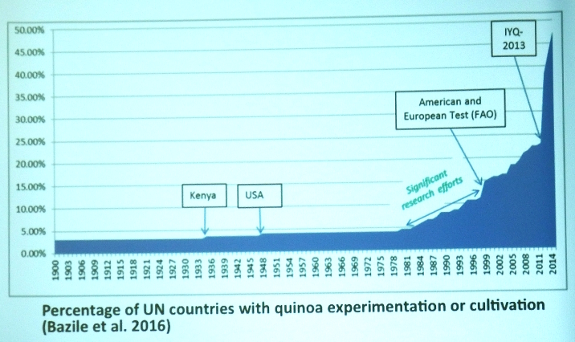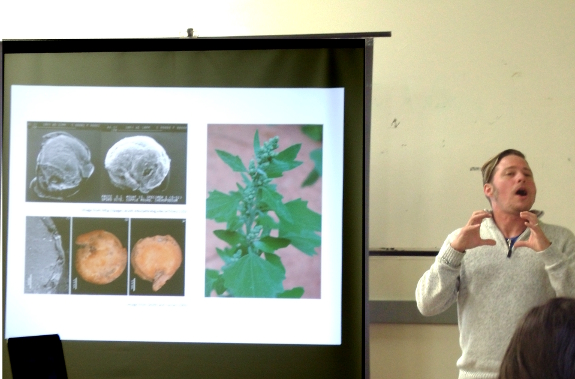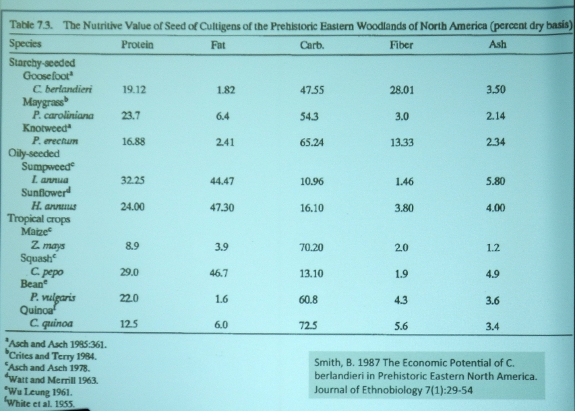
Appalachian quinoa

Have you ever tried
growing quinoa? I have. My
first experiment was so abysmally unsuccessful that I never took another
stab at it.
Apparently, I'm not the
only one. Despite a worldwide interest in the high-protein grain over
the last decade, the vast majority of the crop is still grown in the
Andes. Quinoa is simply a finicky species that can't handle high
humidity, high temperatures, or even very mild frosts. So that box of
seeds you see in the grocery store has an 80% chance of having traveled
all the way from South America.

Enter Paul Patton,
professor of arhaeobotany at Ohio University. Dr. Patton got interested
in one of the
so-called Lost Crops that Native Americans grew in our area before corn
traveled from Mexico and took over local diets. It turns out that Chenopodium
berlandieri is in
the same genus as quinoa and would likely be easy to grow in our
region...if any cultivated seeds still existed.

Appalachian quinoa (as
I've decided to dub Chenopodium
berlandieri), is
even more nutritious than its South American counterpart. And the
species can still be found as a weed throughout our area...although the
plants along riverbanks and in farmer's fields have reverted back to
their thick-hulled, small-seeded wild type.
Luckily, Dr. Patton
isn't daunted. He's started a breeding program using the local wild
type plus a bit of cross-breeding with a Mesoamerican variety in the
search for a more edible variety suitable to cultivation. So far, he's
three generations in and is seeing some success. So maybe within a
decade Appalachian quinoa will once again grace Ohio fields?
Want more in-depth information? Browse through our books.
Or explore more posts by date or by subject.
About us: Anna Hess and Mark Hamilton spent over a decade living self-sufficiently in the mountains of Virginia before moving north to start over from scratch in the foothills of Ohio. They've experimented with permaculture, no-till gardening, trailersteading, home-based microbusinesses and much more, writing about their adventures in both blogs and books.
Want to be notified when new comments are posted on this page? Click on the RSS button after you add a comment to subscribe to the comment feed, or simply check the box beside "email replies to me" while writing your comment.
- Remove comment
- Remove comment
